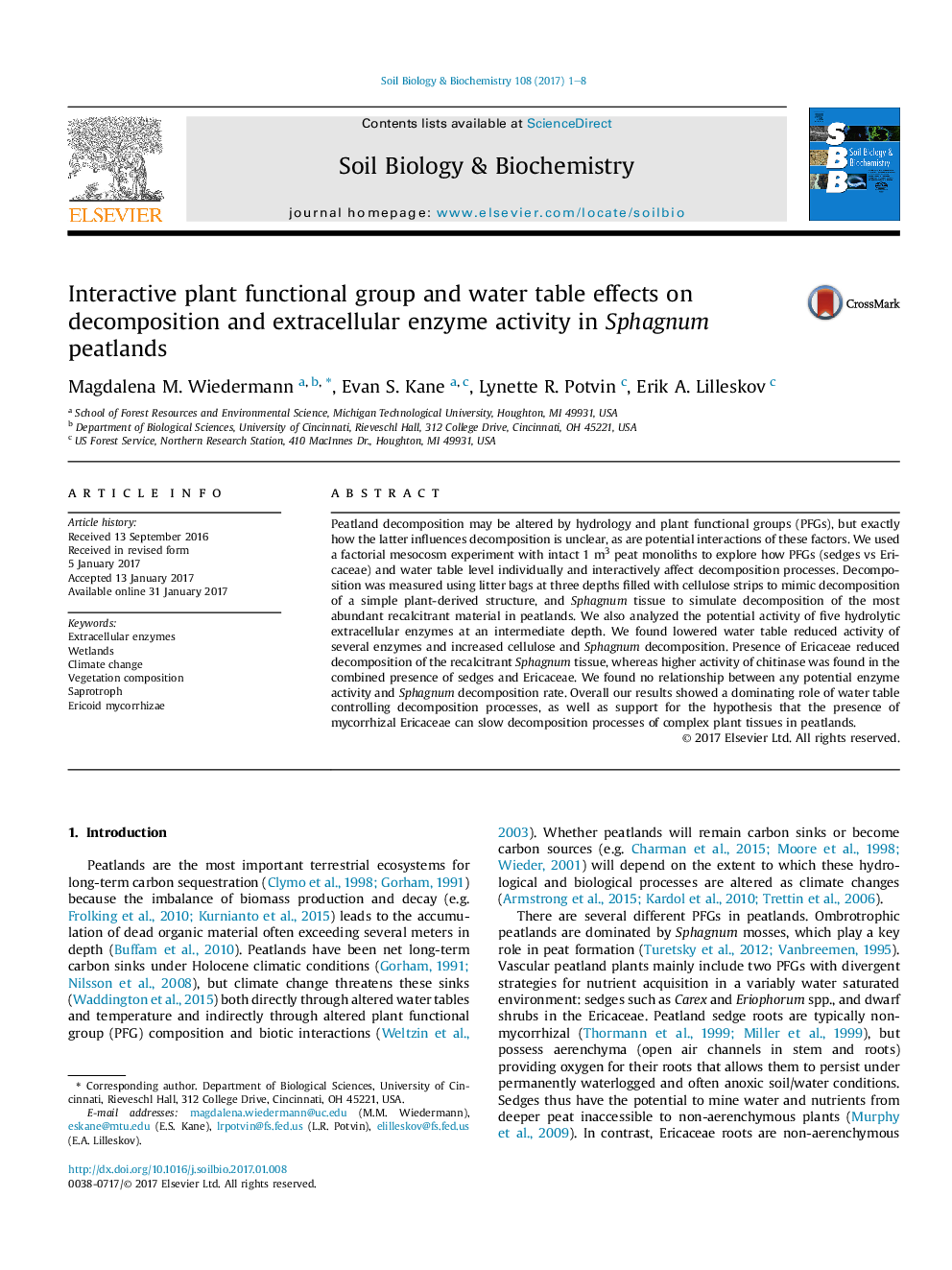| Article ID | Journal | Published Year | Pages | File Type |
|---|---|---|---|---|
| 5516529 | Soil Biology and Biochemistry | 2017 | 8 Pages |
•We found support for the “Gadgil effect” in peatlands.•Ericoid mycorrhizae potentially slow decomposition processes in peatlands.•A strong water table effect on cellulose decomposition was observed.•Extracellular enzyme activity (EEA) responded weakly to the vegetation treatment.•Long term decomposition processes were not captured with point measurements of EEA.
Peatland decomposition may be altered by hydrology and plant functional groups (PFGs), but exactly how the latter influences decomposition is unclear, as are potential interactions of these factors. We used a factorial mesocosm experiment with intact 1 m3 peat monoliths to explore how PFGs (sedges vs Ericaceae) and water table level individually and interactively affect decomposition processes. Decomposition was measured using litter bags at three depths filled with cellulose strips to mimic decomposition of a simple plant-derived structure, and Sphagnum tissue to simulate decomposition of the most abundant recalcitrant material in peatlands. We also analyzed the potential activity of five hydrolytic extracellular enzymes at an intermediate depth. We found lowered water table reduced activity of several enzymes and increased cellulose and Sphagnum decomposition. Presence of Ericaceae reduced decomposition of the recalcitrant Sphagnum tissue, whereas higher activity of chitinase was found in the combined presence of sedges and Ericaceae. We found no relationship between any potential enzyme activity and Sphagnum decomposition rate. Overall our results showed a dominating role of water table controlling decomposition processes, as well as support for the hypothesis that the presence of mycorrhizal Ericaceae can slow decomposition processes of complex plant tissues in peatlands.
